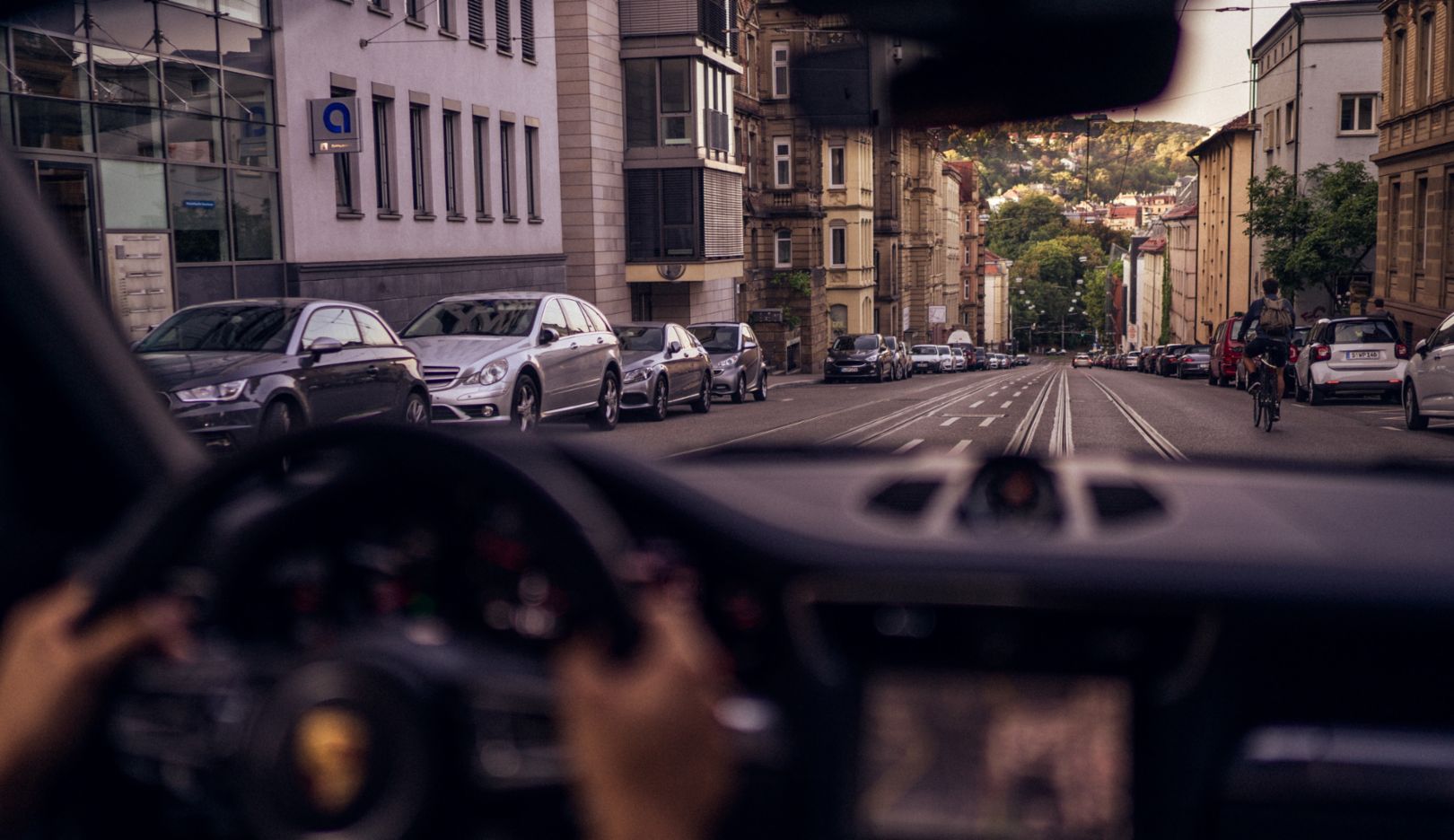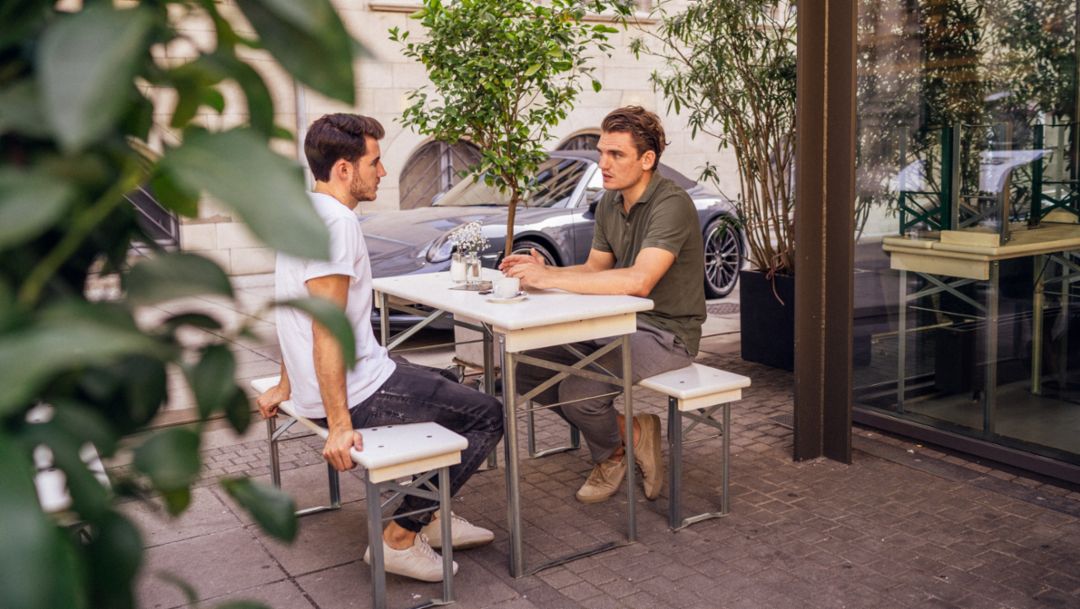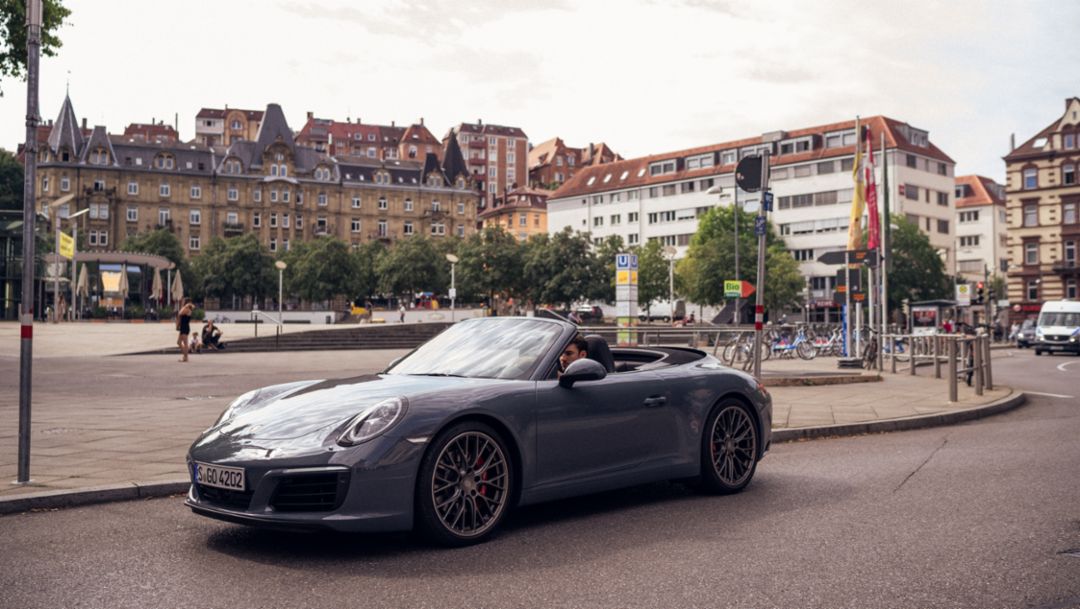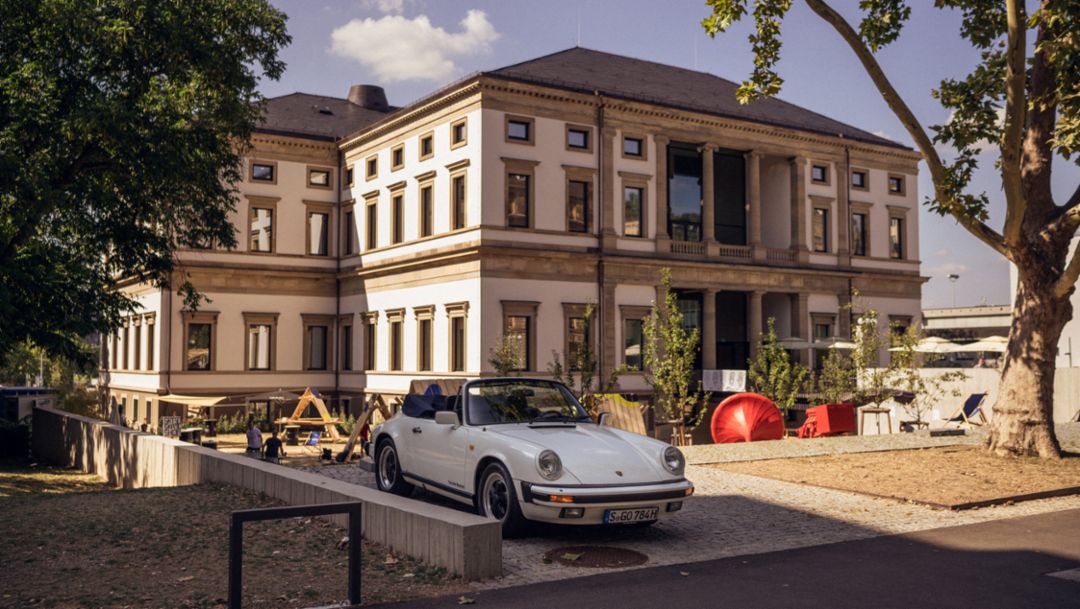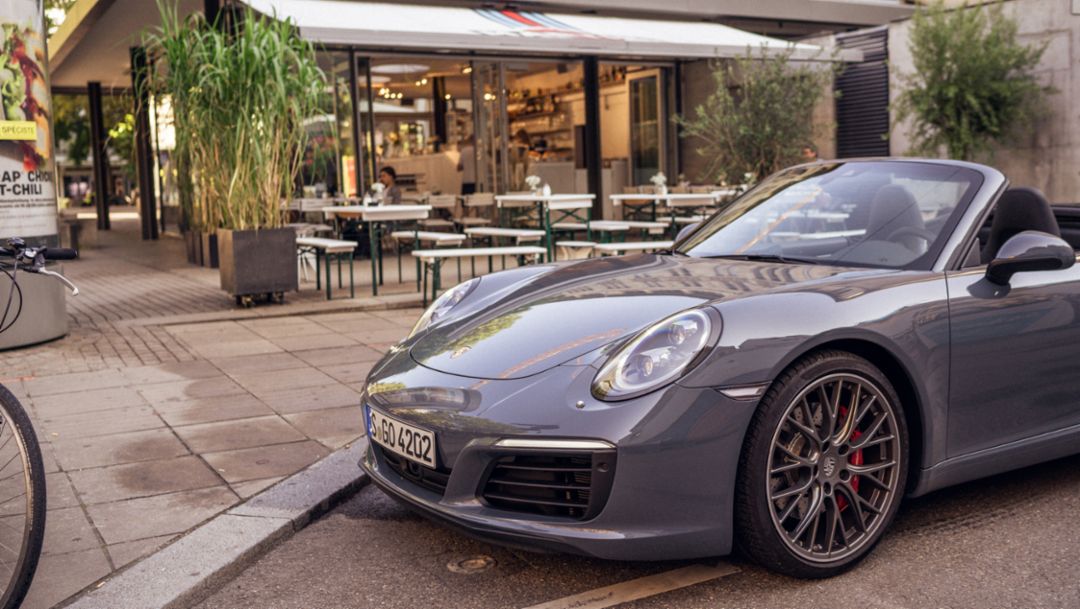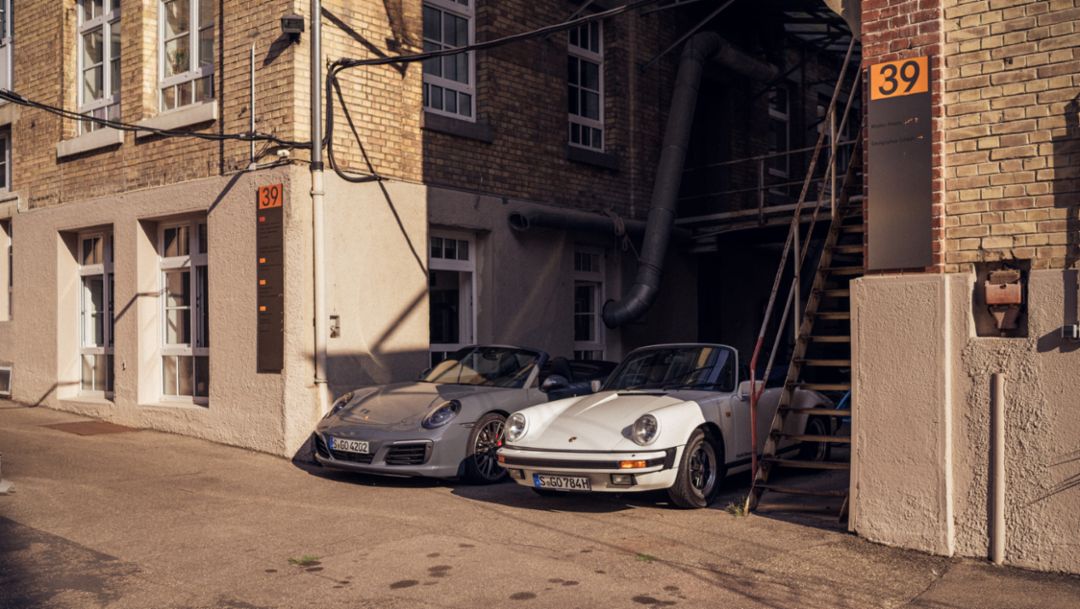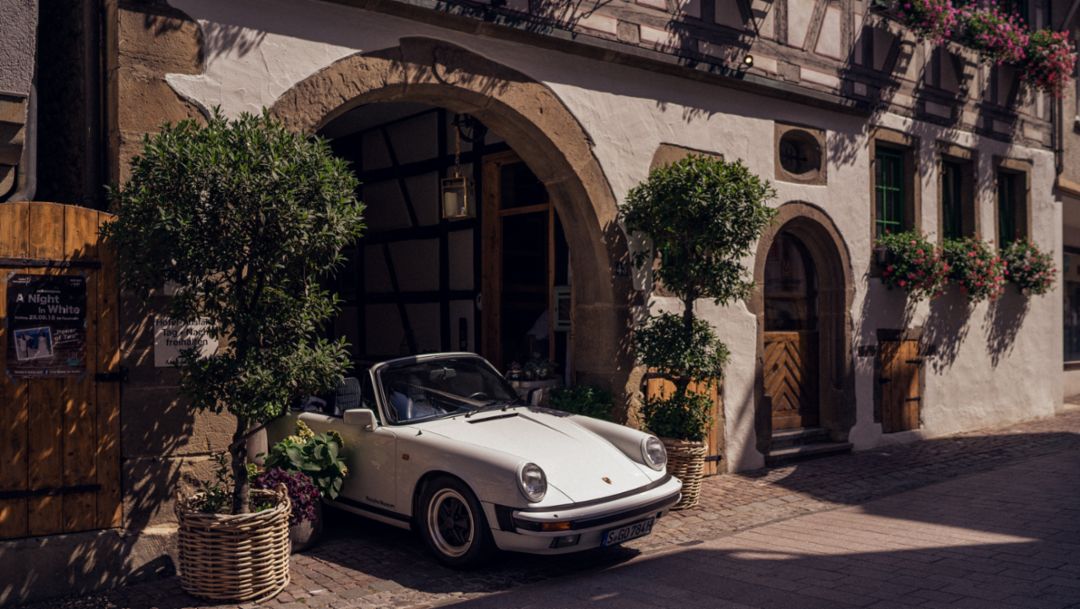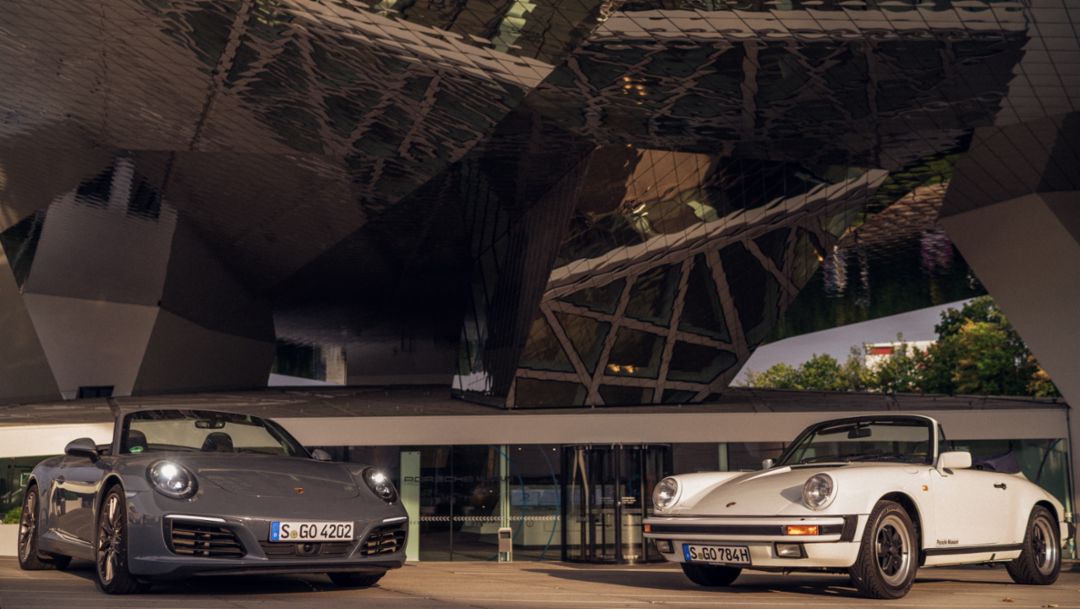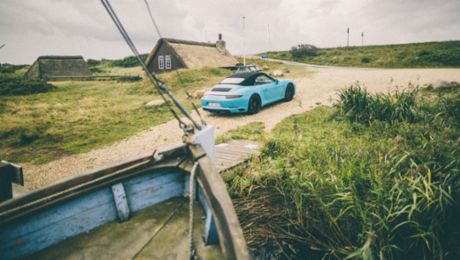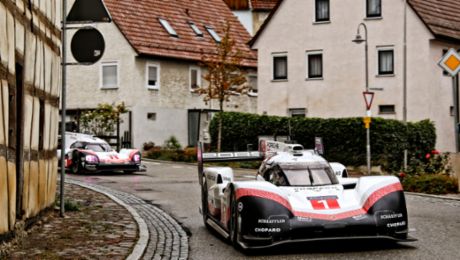We arrived more by chance than anything else – Florian obtained a university place in Stuttgart in 2011 and decided to give life in Swabia a chance. Initially, the intention was that it would be an interim move, before setting out into the great wide world.
Fast forward seven years – and after countless journeys and extended stopovers in places like Berlin and New York – we both live in Stuttgart permanently. It was the right decision for a whole host of reasons.
The right mix
What we value so much here is the combination of a solid, established foundation and new influences. Some might complain about the conservative Swabian values, but we like the reliability and loyalty of our community.
It is also growing: creative Stuttgart does not hide itself away, and many people no longer consider it necessary to move to Berlin or other creative hotspots around the world. Everyone knows and meets each other here – and everyone remains loyal. The evenings are full of exciting events with creative minds and are proof that Swabians know how to do ‘cool’ very well.
What about a sightseeing tour?
Most people know of the main railway station, television tower and the Cannstatter Wasen in Stuttgart. But if you look a little deeper, you soon discover how many sights and hidden jewels are actually here. Let us take you on a tour ...
Feuersee Lake
Located directly on the Rotebühlstraße, one of the main traffic routes in Stuttgart, the Feuersee Lake provides an inviting central setting for an after-work beer next to the water with its impressive church and newly designed promenade. In addition to a colourful mix of people from many different backgrounds, it is possible to see ‘wild’ turtles that have made the Feuersee their home for a number of years now. A highlight is the annual Feuersee festival – a colourful combination of art, food and entertainment that runs for several days.
Driving on, we turn off towards Schwabstraße and pass through the Schwabtunnel – the oldest car tunnel in the world – before reaching the South Quarter of Stuttgart.
Marienplatz Square
The Marienplatz Square is located here with its famous “Zacke” – the only rack railway in Germany that is used in the daily rush hour of a major city. The line has an incline of up to 17.8 per cent and takes passengers up towards Degerloch, providing a fantastic panoramic view over Stuttgart. The Marienplatz Square itself is one of the most popular places in the city to see and be seen. And with a number of stylish restaurants and bars, it’s a great place to spend time.
If we follow the B14 road towards the city centre, this takes us past the newly renovated and impressive Wilhelmspalais.
Wilhelmspalais
Once the residence of the last King of Württemberg, Wilhelm II, the palace located directly on the Charlottenplatz is now the home of the City Museum, which regularly holds cultural events that appeal particularly to the younger crowd. Recently a Summer Festival lasted several weeks and included an artificial wave for surfing. At the end of 2017, a special exhibition was dedicated to the artist collective ‘Kolchose’, which has brought forward a number of hip-hop groups such as Freundeskreis or Massive Töne – each well known throughout Germany. Those who prefer things a little more classical will find art from the 14th century up to the present day in the directly adjacent Stuttgart State Gallery.
In the evening, we move on towards Stuttgart city centre.
City Centre
You can’t get much more central than this – but individually run cafés and restaurants still hold their own here against the competition from large chains. The trendy café Tatti has found a new home directly behind the City Hall, bars around the “Hans in Luck” fountain are extremely popular, and the pubs and restaurants on the Eberhardstraße are always busy. There is plenty happening here – it is a nightlife area with many well established options, and plenty of new ones too.
Next, we look eagerly towards the East Quarter of Stuttgart. This quarter extends from the Schlossgarten Park over the hill towards the River Neckar, and we haven’t made this our personal focal point for no reason.
East Stuttgart
We have lived here for many years now. Our office is also located here in a former furniture factory. This represents everything that we particularly like about Stuttgart: while at first glance it might seem a little behind the times, you discover a unique charm when you take a closer look – in our case with a number of creative agencies and designers.
There is plenty of hustle and bustle in the East Quarter, and an increasing number of new hotspots are making their home here. In our opinion, the best ice cream in the city can also be found here, in the Schleckerei ice-cream parlour at Landhausstraße 154. Cafés and restaurants are sure to follow soon.
European Quarter
One of the places that attracts architectural photographers from near and far is the new City Library in the European Quarter, which was designed by the Korean architect Eun Young Yi. The old goods yard used to be located here. Now, Stuttgart shows its modern side with stock exchange and bank buildings next to the main railway station. All eyes are on this area, eager to discover what will arrive next.
From the newest buildings in the city, we now make our way out into the countryside.
Stuttgart surroundings
Stuttgart is located in a valley, which means that on some days the air really stands still. It’s therefore good that we always enjoy exploring the surrounding countryside. So, let’s get into the car and get out of the ‘city basin’. We have hardly left the city before we are right in the middle of nature. It is quickly possible to find small, attractive villages that just invite you to stop for a while. We stop in Besigheim and have a good time. The clocks here tick more slowly, but you’re still not quite away from everything.
Our final destination is the Porsche Museum. Here also, old and new meet up again – like in the whole city.
Porsche Museum
Automotive treasures from many decades of sports car history can be found in Stuttgart-Zuffenhausen – the headquarters of Porsche. The futuristic building on Porscheplatz catches the eye immediately and as we stand on the courtyard in front of the building we have the feeling that the roof is floating above our heads. The architecture of the museum is incredibly impressive but it’s what’s inside that counts. Since its opening in 2009, the milestones in the history of Porsche can be experienced here close up. The special exhibition ‘70 years of Porsche Sports Cars’, which also includes the Porsche prototype with the chassis number 356-001, runs here until January 2019 and is definitely something to put on the agenda.
We could have continued our city tour forever: with a visit to the Wilhelma – Stuttgart’s zoo and botanical garden; Tübinger Straße with its many new and trendy bars; or the large flea market which takes place on Karlsplatz every Saturday. But some things are best discovered in person. Put them on your list for when you visit this surprising city.
“Roserbrothers”
They used to play in secret with their father's camera; this passion has since, via a somewhat roundabout route, turned into a profession: Under the name “Roserbrothers”, Florian and Simon Roser operate a small production company in Stuttgart, specialising in photos and film. Whether they are working with sports cars or beautiful women – they mostly tell the stories that they themselves are interested in, stories that are dynamic, colourful and always close to real life.
Consumption data
911 Carrera S Cabriolet: Fuel consumption combined 8.8 – 7.8 l/100 km; CO₂ emissions 202 – 178 g/km
